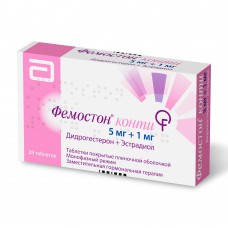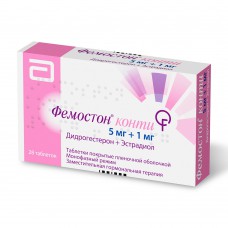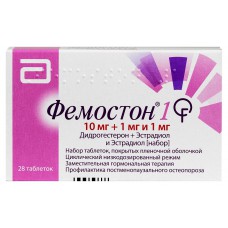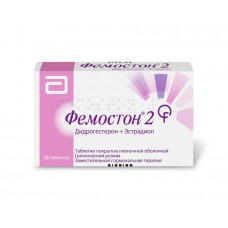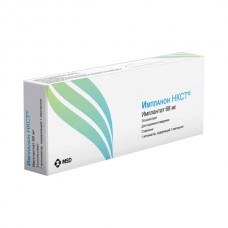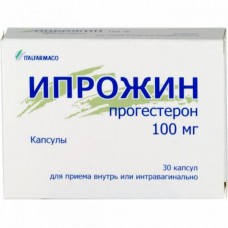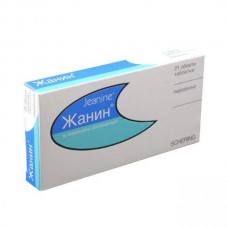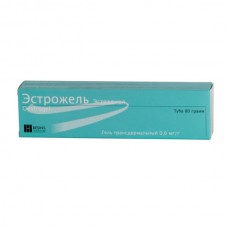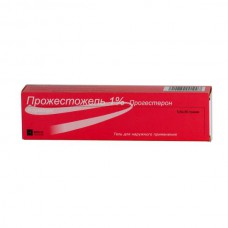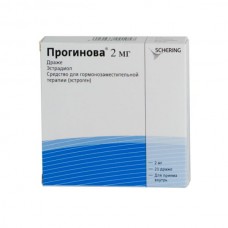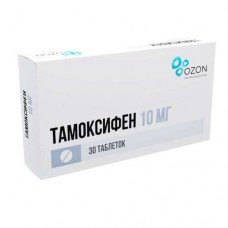Estrogens, Progestogens

Natural follicular hormones are produced by ovaries are estradiol, estrone and estriol. These hormones are called estrogen due to the fact that they are from castrated female animals in heat (estrus).
Together with the hormone of the corpus luteum follicular hormone involved in the regulation of the menstrual cycle and the function of procreation. During pregnancy, the production of follicular hormones increases significantly, and large quantities are excreted in the urine.
According to current data, in the relevant organs (target organs) there are specialized receptors for estrogen, via interaction with which are implemented the effects.
When administered estrogen preparations (natural and synthetic origin) cause-specific estrogenic effects: endometrial proliferation, stimulates the formation of the uterus and female secondary sexual characteristics, especially in their underdevelopment, softens and eliminates common disorders (osteoporosis, atherosclerosis, atrophy of the skin and mucous urogenital system) arising in the body of women on the grounds of insufficiency of sex glands menopausal or after gynecological surgery (ovariectomy). Estrogens are involved in the formation and maintenance of bone strength, reduce its resorption, normalize the balance between osteoblasts and osteoclasts (the cells contain estrogen receptors). Therefore, the impaired production of estrogen in the body (menopause, when ovariectomy, etc.) accompanied by increased bone resorption, development of osteoporosis and increased bone fragility.
Estrogenic drugs used in pathological conditions associated with inadequate function of the ovaries: in primary and secondary amenorrhea, secondary sexual failure, hypoplasia of the sexual apparatus and secondary sexual characteristics, menopausal or post-castration disorders, for the prevention and treatment of osteoporosis, menopause, infertility, weakness generic activities, post-term pregnancy etc. Sometimes they are also prescribed for hypertension in women in climacteric period and in peripheral vascular spasm.
Estrogens have hypocholesterolemic effect, however, their use for the treatment and prevention of atherosclerosis in men is complicated by the fact that long-term use occur the phenomenon of feminization. Because estrogens cause proliferative changes in the endometrium to protect it from hyperplasia when conducting hormone replacement therapy in women with intact uterus it is necessary for 10-12 days each cycle of treatment in postmenopausal women add gestagen (Klimonorm, Divina, etc.), and in postmenopausal women during continuous admission to designate daily combination of estrogen with gestagenom (Klimodien).
The estrogen-based drugs should be under close medical supervision. Estrogen preparations are contraindicated women with malignant and benign tumors of the genital organs, mammary glands and other organs (under 60 years), with mastitis, endometritis, tendency to uterine bleeding, as well as in giperestrogennoy phase of menopause.
Effects of estrogen attenuated by antiestrogens. Drugs in this group specifically associated with estrogenozavisimymi receptors (estrogen receptor ) in the hypothalamus and ovaries. In small doses they enhance the secretion of pituitary gonadotropins (prolactin, follicle-stimulating and luteinizing hormone) and stimulate ovulation, that is, have a moderate estrogenic action which is clinically manifested only in case of insufficiency of endogenous estrogens. However, a high level of estrogen, these drugs cause the opposite effect. Decreasing levels of circulating estrogen, oppressive in large concentrations, the incretion of gonadotropin -, they contribute in increasing the secretion of the latter. Large doses of estrogens inhibit the secretion of gonadotropins. Progestogenic and androgenic activity, they do not possess.
Progestin (hormones produced by the ovaries) by the feedback mechanism inhibit the secretion of hypothalamic factors releasing luteinizing and follicle stimulating hormones, inhibit the formation of the pituitary gonadotropin hormones and inhibit ovulation.
Indications for use of progestins are disorders of ovarian function, associated with the lack of yellow body, dysfunctional uterine bleeding, menstrual disorders (amenorrhea, oligomenorrhea, algomenoreya), etc.
Based on progestins and estrogens (as well as androgenic and antiandrogenic drugs, with the addition in some cases substances from other pharmacological groups), a large number of combined drugs, including "anticlimactically" and drugs for the treatment of cancer. You need to consider that along with the main action, they can have side effects inherent within their structure components.
Hormonal products containing progestins, estrogens or combinations used as oral contraceptives.
The use of progestins as contraceptives based on their ability to block the release of releasing factors (luteinizing and follicle stimulating) the hypothalamus to inhibit the secretion of pituitary gonadotropin hormones and inhibit ovulation. With the concomitant use of progestins with estrogens reliability of contraception increases. Along with the influence of the gonadotropic function a role in the contraceptive effect played by other factors (such as changes to the chemistry of the vaginal environment and increase viscosity of cervical mucus, inhibiting sperm motility, or endometrium, complicating implantation of the egg, etc.). Modern oral contraceptives are divided into groups:
a) monophasic progestogen-estrogen drugs (LOGEST, Janine, Rigevidon, Minisiston, etc.);
b) two - and three-phase gestagen-estrogen preparations (Anteovin, Triziston, Trikvilar, Three-regolith, etc.);
in) manageronline drugs progestin — mini-pill (Microlut).
Progestin components gestagen-estrogen contraceptives are levonorgestrel, gestodene, dienoguest and other synthetic progestins, surpassing in activity and progesterone acting on the receptor level without prior metabolic transformations, and the estrogen component is ethinyl estradiol — estrogen highly efficient oral remedy.
Monophasic drugs administered in endometriosis, dysfunctional uterine bleeding, amenorrhea, premenstrual syndrome, menopausal syndrome and other gynecological diseases.
The presence of progestogen such as cyproterone acetate anti-androgenic properties, has allowed to develop hormonal combination drug Diane−35, which is shown for women in need of protection from unwanted pregnancy and suffering from androgen-dependent diseases (acne, hirsutism, seborrhea, androgenetic alopecia).
Two-, three-phase products produced in the form of a set of tablets with different amounts of progestogen and estrogen and accepted "calendar", respectively, throughout the physiological menstrual cycle. Three-phase preparations usually prescribed in that case, if you are using a monophasic hormonal contraceptives is no withdrawal bleeding or breakthrough bleeding occurs.
Mini-pill contain a minimum amount of progestogen required for contraception; they are prescribed mostly in the presence of contraindications to the use of combined progestogen-estrogen drugs. An even lower amount of the hormone enters the body, if you use the intrauterine gormonovysvobozhdayuschuyu system, which directly into the uterus stands out daily 20 micrograms of levonorgestrel.
If effect of oral contraceptives develops at a continuous application over time and the reliability of contraception is largely dependent on careful adherence to regimens, intrauterine system with progestogen (Mirena) guarantees the contraceptive effect is comparable to sterilization.

